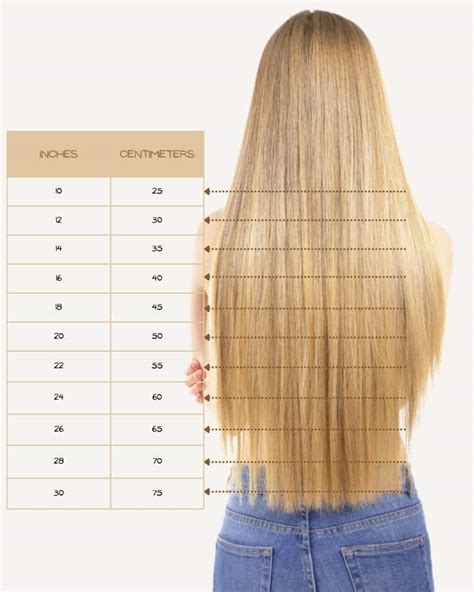Introduction
Measuring hair length is crucial for tracking growth, determining necessary trims, and understanding hair care needs. The hair inch chart provides a standardized method for measuring hair from the scalp to the tips, enabling accurate comparisons and communication.

Hair Inch Chart Measurement Technique
To utilize the hair inch chart effectively, follow these steps:
- Gather Equipment: You will need a ruler or tape measure and a mirror.
- Position: Stand facing a mirror with your head tilted back and hair combed straight.
- Starting Point: Place the zero mark of the ruler or tape measure at the scalp, where your hair begins.
- Measure: Extend the measuring tool along the hair shaft, following its natural curve.
- Record: Note the measurement in inches at the end of your hair.
Hair Inch Chart: Length Classification
The hair inch chart classifies hair length into the following categories:
| Length | Range (Inches) |
|---|---|
| Short | 0 – 6 |
| Medium | 7 – 14 |
| Long | 15 – 24 |
| Extra Long | 25+ |
Average Hair Growth Rate
According to the American Academy of Dermatology, hair grows at an average rate of 0.5 inches per month, or 6 inches per year. This rate can vary based on factors such as age, genetics, and hair care practices.
Determining Hair Type and Health
Hair inch chart measurements can provide insight into hair type and overall health. Generally, shorter hair lengths are associated with finer, more delicate hair, while longer hair lengths indicate thicker, healthier hair.
Hair Care and Maintenance
The hair inch chart can inform hair care decisions and maintenance schedules. For example, shorter hair may require more frequent trims to prevent split ends, while longer hair may benefit from deep conditioning treatments to maintain moisture and shine.
Tips and Tricks
- Use a ruler or tape measure with clear markings for accurate measurements.
- Measure your hair at the same time each day to ensure consistency.
- Avoid measuring hair that has been recently styled, as products and heat can temporarily alter its length.
- If you have curly or textured hair, measure it when it is stretched straight to obtain an accurate length.
Strategies for Hair Growth Optimization
- Maintain a Healthy Diet: Consume a balanced diet rich in vitamins, minerals, and protein to support hair growth.
- Manage Stress: Emotional stress can negatively impact hair health. Find healthy ways to manage stress, such as exercise, meditation, or yoga.
- Use Growth-Promoting Products: Consider incorporating hair care products formulated with ingredients like keratin, biotin, or rosemary oil, which have been shown to promote hair growth.
Pros and Cons of Using Hair Inch Charts
Pros:
- Provides a standardized method for hair length measurement
- Enables easy comparisons and communication
- Can indicate hair type and overall health
Cons:
- May not account for factors such as hair density or texture
- Can be difficult to measure accurately on your own
- Requires regular measurements to track progress
Innovative Applications of Hair Inch Charts
Beyond traditional hair care, hair inch charts can be applied in novel ways, such as:
- Developing Hair Extensions: Create custom hair extensions by matching the length and color of natural hair using a hair inch chart.
- Estimating Wig Size: Determine the appropriate wig size by measuring the length of your natural hair and comparing it to the hair inch chart provided by wig manufacturers.
- Quantifying Hair Loss: Monitor hair loss by measuring the reduction in hair length over time, providing objective data for medical evaluation and treatment.
Conclusion
The hair inch chart is an indispensable tool for measuring hair length, informing hair care decisions, and tracking hair growth. By understanding the measurement technique and classification system, you can effectively assess your hair’s condition, optimize its growth, and maintain a healthy, beautiful mane.
